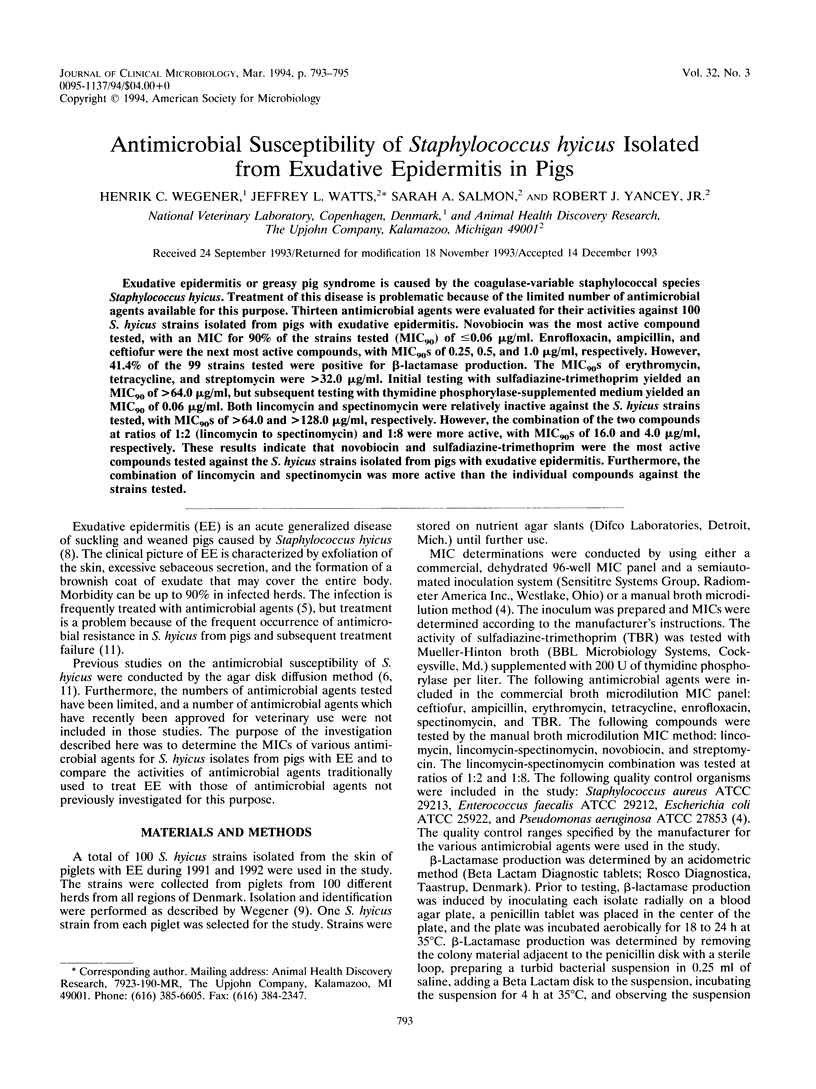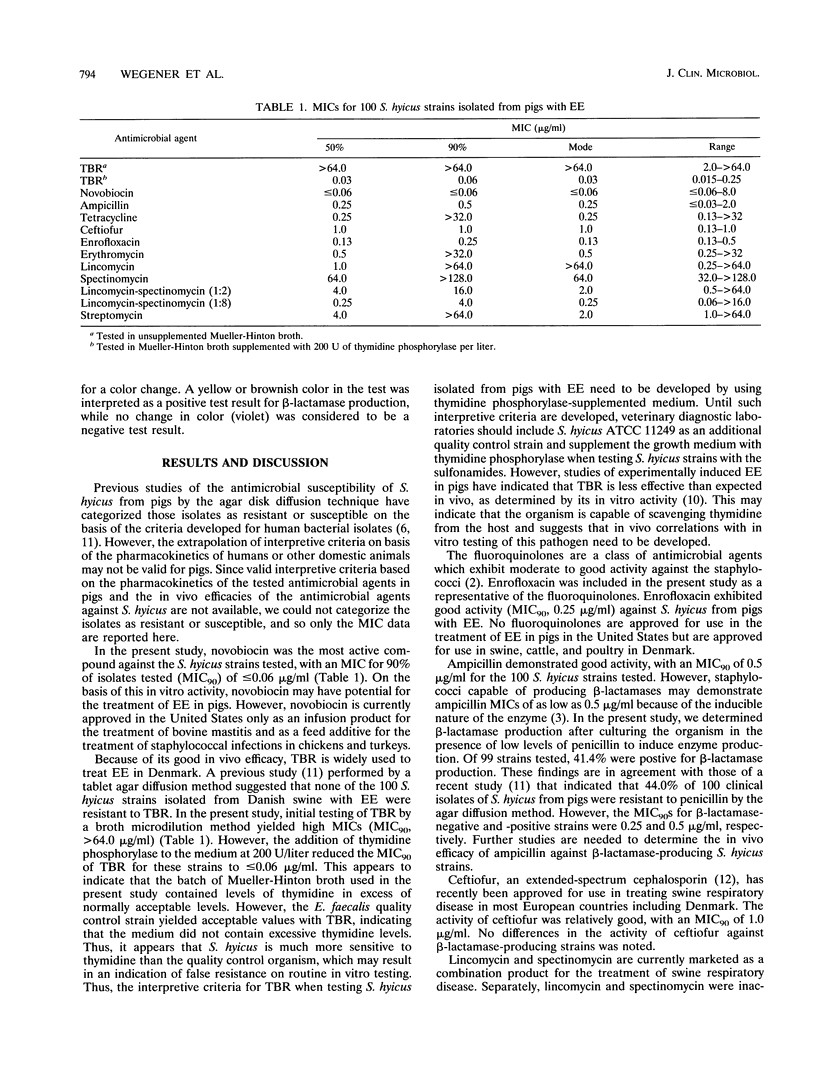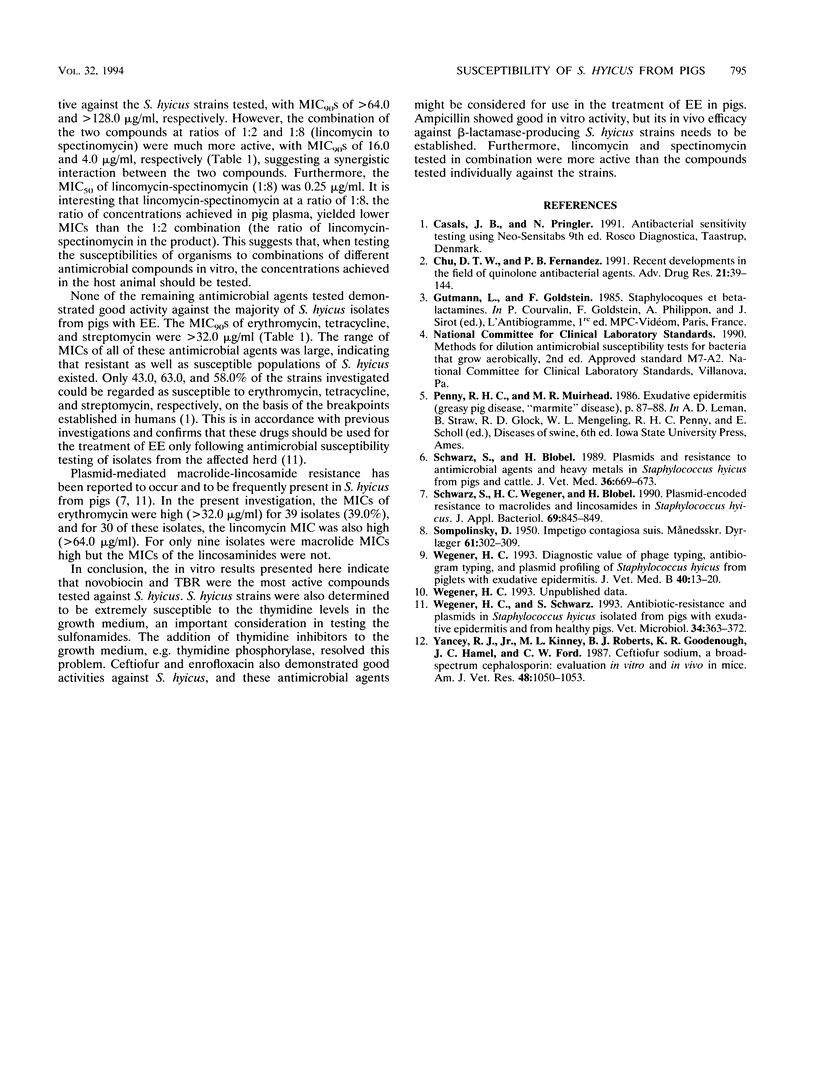Abstract
Exudative epidermitis or greasy pig syndrome is caused by the coagulase-variable staphylococcal species Staphylococcus hyicus. Treatment of this disease is problematic because of the limited number of antimicrobial agents available for this purpose. Thirteen antimicrobial agents were evaluated for their activities against 100 S. hyicus strains isolated from pigs with exudative epidermitis. Novobiocin was the most active compound tested, with an MIC for 90% of the strains tested (MIC90) of < or = 0.06 microgram/ml. Enrofloxacin, ampicillin, and ceftiofur were the next most active compounds, with MIC90s of 0.25, 0.5, and 1.0 microgram/ml, respectively. However, 41.4% of the 99 strains tested were positive for beta-lactamase production. The MIC90s of erythromycin, tetracycline, and streptomycin were > 32.0 micrograms/ml. Initial testing with sulfadiazine-trimethoprim yielded an MIC90 of > 64.0 micrograms/ml, but subsequent testing with thymidine phosphorylase-supplemented medium yielded an MIC90 of 0.06 microgram/ml. Both lincomycin and spectinomycin were relatively inactive against the S. hyicus strains tested, with MIC90s of > 64.0 and > 128.0 micrograms/ml, respectively. However, the combination of the two compounds at ratios of 1:2 (lincomycin to spectinomycin) and 1:8 were more active, with MIC90s of 16.0 and 4.0 micrograms/ml, respectively. These results indicate that novobiocin and sulfadiazine-trimethoprim were the most active compounds tested against the S. hyicus strains isolated from pigs with exudative epidermitis. Furthermore, the combination of lincomycin and spectinomycin was more active than the individual compounds against the strains tested.
Full text
PDF


Selected References
These references are in PubMed. This may not be the complete list of references from this article.
- Schwarz S., Blobel H. Plasmids and resistance to antimicrobial agents and heavy metals in Staphylococcus hyicus from pigs and cattle. Zentralbl Veterinarmed B. 1989 Nov;36(9):669–673. doi: 10.1111/j.1439-0450.1989.tb00660.x. [DOI] [PubMed] [Google Scholar]
- Schwarz S., Wegener H., Blobel H. Plasmid-encoded resistance to macrolides and lincosamides in Staphylococcus hyicus. J Appl Bacteriol. 1990 Dec;69(6):845–849. doi: 10.1111/j.1365-2672.1990.tb01582.x. [DOI] [PubMed] [Google Scholar]
- Wegener H. C. Diagnostic value of phage typing, antibiogram typing, and plasmid profiling of Staphylococcus hyicus from piglets with exudative epidermitis. Zentralbl Veterinarmed B. 1993 Feb;40(1):13–20. doi: 10.1111/j.1439-0450.1993.tb00103.x. [DOI] [PubMed] [Google Scholar]
- Wegener H. C., Schwarz S. Antibiotic-resistance and plasmids in Staphylococcus hyicus isolated from pigs with exudative epidermitis and from healthy pigs. Vet Microbiol. 1993 Apr;34(4):363–372. doi: 10.1016/0378-1135(93)90061-b. [DOI] [PubMed] [Google Scholar]
- Yancey R. J., Jr, Kinney M. L., Roberts B. J., Goodenough K. R., Hamel J. C., Ford C. W. Ceftiofur sodium, a broad-spectrum cephalosporin: evaluation in vitro and in vivo in mice. Am J Vet Res. 1987 Jul;48(7):1050–1053. [PubMed] [Google Scholar]


